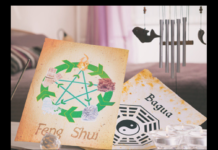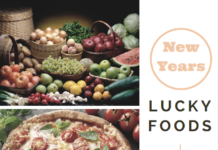Also called the Festival of Colors, Holi is an ancient Hindu festival that is observed on the last full moon of the lunar month of Phalguna, usually in March, and marks the beginning of Spring. Holi Festival is mostly celebrated in India and Nepal and is divided into two main events: Holika Dahan– a bonfire lighting event which takes place on the eve of the main event, and Rangwali Holi– the main Holi festivities where revelers cover themselves in colorful powders. This year’s Holi begins with Holika Dahan on March 20, 2019 and culminates on March 21, 2019 with Rangwali Holi festivities.
Here are some common Holi Festival traditions and rituals associated with this exuberant celebration.
Holika Dahan – Bonfire Festivities
According to a popular Hindu legend, a power-hungry king, Hiranyakashipu, and his evil sister, Holika, plotted to kill his son Prahlada, who was a faithful devotee of Lord Vishnu. Hiranyakashipu forced Prahlada to sit atop a burning pyre along with his sister Holika. Prahlada prayed to Vishnu and was spared from the fire, leaving Holika to burn in the pyre and marking the triumph of Lord Vishnu. Since then, on the full moon of Phalgun, Holika Dahan, or the “Burning of Holika” takes place to celebrate the end of winter and the symbolic triumph of good over evil. In certain parts of India, Holi is associated with Lord Krishna and participants revere Krishna rather than Vishnu.
During Holika Dahan, or “Little Holi,” participants gather around a large bonfire, singing and dancing. An effigy of Holika is usually placed on top of the bonfire as revelers chant and perform religious rituals. It is common for participants to take embers from the Holi bonfire to start fires with in their own homes, and the ashes are believed to have healing properties.
Rangwali Holi – Throwing Colorful Powders
The following day, the main Holi festivities take place. Rangwali Holi, also known as Dhulandi, is celebrated in the streets and public places across India, Nepal, and other regions with large Hindu populations. Revelers during Rangwali Holi throw colorful fine powders called gulal onto passersby. Rangwali Holi is a joyful festival of colors, with participants dancing, banging traditional wooden drums called a dhol, and playing pranks on each other– all in good fun.
In traditional custom, the gulal powders are prepared in households using local herbs and spices such as turmeric, saffron, and kumkum to create the vivid colors, in a process known as abeer. Color is very symbolic in Hinduism, with red symbolizing passion, green symbolizing fertility, and yellow representing purity, to name a few.
Family, Friends and Food
While it is known as the Festival of Colors, the real essence of Holi Festival is the gathering together of family and friends to feast and celebrate. Visiting loved ones to offer blessings is also an important Holi tradition. Children pay respects to elders by touching their feet, which is a sign of reverence in Hindu custom.
Food is another important Holi Festival tradition. Some popular Holi foods and delicacies are puranpoli, a sweet flatbread, sweet dumplings known as gujia, and dahi-bada, a fried dough soaked in yogurt. An intoxicating beverage called bhang is derived from cannabis and mixed with a yogurt drink called lassi and is commonly consumed during Holi.








